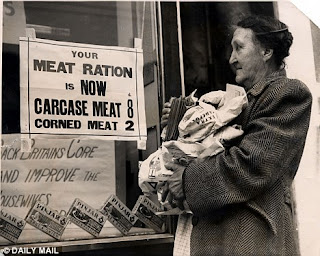The former collection, in which Montgomery was able to revise the stories, is much the superior of the two, although two of the tales in Fen Country, the classical "Who Killed Baker?" (co-authored with Geoffrey Bush, a fellow composer and son of Golden Age detective novelist Christopher Bush) and the sardonic and brilliantly titled "We Know You're Busy Writing, But We Thought You Wouldn't Mind if We Just Dropped in for a Minute" (where a crime writer with writer's block--who seems suspiciously like "Edmund Crispin"--is provoked to desperate measures to damn the flow of "friends" thoughtlessly interrupting his work) are outstanding. In his biography of Montgomery David Whittle is quite right to praise both these tales.
Links for reviews of the two Crispin short story collections:
http://stkarnick.com/culture/2010/12/14/book-review-beware-of-the-trains/
http://stkarnick.com/culture/2010/12/14/book-review-fen-country/
We also learn in some detail from Whittle how Montgomery became a devoted member of the Detection Club, that august organization of England's finest detective novelists. It will be recalled that Montgomery was initiated into the Club in 1947, at the recommendation of his 1940s mystery idol, John Dickson Carr. The charming Montgomery was well-liked by the members, including the formidable Dorothy L. Sayers, who I know from my own study of Sayers' correspondence referred to Montgomery as "Young Crispin." In one letter to Sayers, however, Montgomery did apologize for "cadging so many cigarettes at the last meeting" (see my recent CADS Supplement 14, Was Corinne's Murder Clued? The Detection Club and Fair Play)!
 |
| Dorothy L. Sayers |
A number of Detection Club members shared Montgomery's thirst for liquor. Montgomery got along quite well, evidently, with both the popular John Dickson Carr and the less popular Anthony Berkeley, both of whom were themselves bibulous gentlemen. Whittle quotes a colorful letter by Montgomery that is filled with sentimental alcoholic reminiscence (this letter is in the possession of Carr scholar Douglas Greene):
Those were the days, weren't they?--when, e.g., I fell drunkenly asleep on Christianna Brand's ample bosom in a taxi, and she had the greatest difficulty in shifting me; when you and Tony Berkeley and I indulged in maudlin confessions of our sexual preferences one late afternoon in the Mandrake Club; when I tried, after four bottles of champagne and two of brandy apiece to fight a duel with you in your Hampstead flat with (unbuttoned) foils....
 |
| John Dickson Carr |
These exploits are amusing, though perhaps less so when realize that Montgomery was developing a serious alcohol problem that was to drastically inhibit his creative work.
Montgomery also was experiencing dissatisfaction in his romantic life, evidently being unable to bring relationships with women to full emotional and physical consummation. Montgomery "liked to think of himself as a womanizer...but he was simply not cut out for it," writes Whittle. "This could well account for the idealistic portraits of eligible young women he draws in his novels. There was a juvenile streak in him...and his drinking did not help matters either. 'There are times I'd be happier without sex,' he wrote in 1956. With his male friends he talked a lot about women because it was the thing to do, but he was incapable of bringing a relationship to a resolution, perhaps because he did not want to be seen as ordinary in any way."
Additionally, Montgomery's health was deteriorating from overindulgence in alcohol and cigarettes. In Whittle's view these factors, plus Montgomery's own temperamental indolence and lack of confidence (despite his impressive early career) led him to almost entirely abandon not only his literary work, but the lucrative writing of film scores as well.
Since the mid-1950s, Montgomery had been promising his publisher, Gollancz, a new mystery, Judgement in Paris, but in 1965 he dropped it. By 1969, Montgomery claimed he was two-thirds through with a new Gervase Fen crime novel, entitled The Glimpses of the Moon, but it did not finally make it into print until 1977, just two years before Montgomery's death. Judging from his correspondence, Montgomery now found writing a murderous endeavor. "[S]eems the same mixture as before....I don't seem to have matured in any way," he wrote dispiritedly of Glimpses in 1969. And: "[O]n the final agonising stages of my bloody novel. God almighty, how I detest writing!"
A 1966 journal Whittle discovered makes sad reading for the Edmund Crispin admirer. Here are some brief extracts:
2 January
"Hangover. Day in bed."
3 January
"[N]othing accomplished. Must have read, but can't remember what. Must have drunk a bit, too. Again futile."
4 January
" Much too much drink."
5 January
"Gave up smoking, god help me. No drink all day either. (No work, either). Reading Ngaio Marsh's 'Swing, Brother, Swing'--poor, and if she's going to write about jazz bands, why the hell can't she find out something about them? 'Tympanist' indeed."
Whittle quotes two more bleak weeks from this grim journal of futility. Unquestionably Montgomery had descended a great way from that handsome and dazzlingly brilliant young man at Oxford who produced both detective novels and musical compositions seemingly with the greatest of ease (for the first photo, my thanks to John Norris of prettysinister.blogspot.com).
Still there are some positive things to say about the last dozen years or so of Bruce Montgomery's life, as David Whittle shows. In 1967, Montgomery became, at his friend Julian Symons' behest, Symons' successor as the crime fiction reviewer for the Sunday Times. He remained active in the Detection Club. And, in 1977, he finally gave fans of Edmund Crispin their long-awaited glimpse of a new detective novel. More on all this in Part Five (the last).





















































